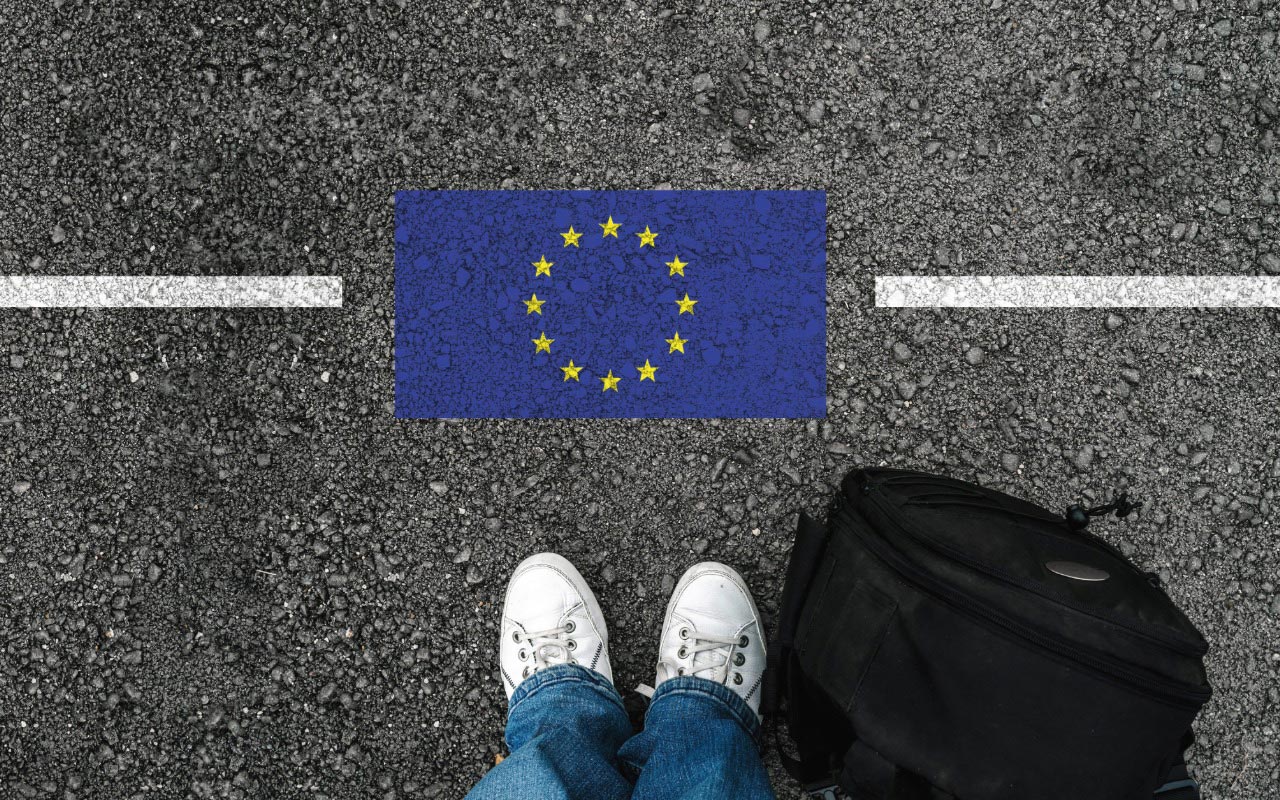
On October 12, 2025, the European Union will launch its Entry/Exit System (EES), which will change travel throughout Europe. By substituting advanced biometric tracking technology for conventional passport stamps, this automated digital border control system will radically change how Indian passport users enter and leave the Schengen Area. Millions of Indian tourists who visit Europe each year will be directly impacted by the implementation, which is the EU’s biggest border control change in decades.
Digital Revolution: Understanding Europe’s Smart Border Initiative
For all non-EU nationals, including Indian citizens, the Entry/Exit System means a full change from human crossing processes to automatic digital tracking. Across all Schengen external borders, this IT-powered system will take biometric information, such as fingerprints and facial scans, in addition to normal visa data and entry-exit times.
EES will make electronic records that are good for three years, in contrast to the present practice of border officers physically marking IDs. The technology will greatly change how Indian tourists will be affected by Europe’s Digital Entry/Exit technology (EES) at all entry points, including airports, seaports, and land borders throughout the Schengen region.
Expert visa support websites such as Atlys are already putting up extensive guides to help Indian tourists handle these changes with ease and make sure they are aware of the new requirements ahead to their trips to Europe.
Immediate Changes for Indian Passport Holders
When EES goes active, Indian tourists will notice a number of crucial routine changes. Travelers must undergo biometric registration at specific border control posts, which includes digital fingerprinting and face imaging, on their initial entry after October 2025. Travelers should arrive at airports with large backup times because this first registration process may take longer than planned.
Digital records that catch precise entrance and exit timings will totally replace passport stamps under the new system. This suggests that the travel habits of Indians who visit Europe regularly will be carefully tracked and recorded online. For business and pleasure travelers who visit Europe regularly each year, the effect of Europe’s Digital Entry/Exit System (EES) on Indian tourists becomes quite critical.
Crucially, any past overstays or visa crimes will be digitally recorded, which can impact future admissions decisions. Because of the system’s thorough tracking powers, going over the 90-day restriction in any 180-day period will be quickly noticed and logged.
Technology Integration and Processing Improvements
To speed up border crossings, EES offers advanced automatic passport check gates that make use of biometric verification technology. Subsequent entrance should be much speedier for Indian tourists after they have finished their first biometric registration since the technology can instantly verify their identify without the need for human involvement.
Authorities in France or Italy will be able to observe a traveler’s admission in Germany quickly due to the digital infrastructure that permits real-time data transfer between Schengen member states. At internal Schengen borders, this integrated method improves security while likely cutting down on processing times.
To aid Indian travelers in grasping these technology requirements and providing the requisite papers for successful EES compliance, travel service businesses like as Atlys are creating specialized support systems.
Distinguishing EES from ETIAS Requirements
The difference between EES and the soon-to-come European Travel Information and Authorization System (ETIAS) must be understood by Indian passport users. Although both methods are meant at non-EU travelers, their functions under Europe’s border control plan vary.
Regardless of visa rules, EES works as a method for documenting all non-EU visitors’ entry and leave. Indian residents, who usually need Schengen visas, will only deal with EES when they reach the border. On the other hand, ETIAS only applies to visitors who require pre-travel permission and are not required to seek a visa.
This difference is important for understanding how Indian passengers will be affected by Europe’s Digital Entry/Exit System (EES), since it makes it clear that Indian guests with visas only need to worry about EES compliance and not ETIAS responsibilities.
Strategic Preparation for the Digital Transition
Indian travelers can start getting ready for the introduction of EES by making sure their passports are good for at least six months after the times they wish to go. Travelers should mentally prepare for a bit longer processing delays for first entries by being aware that biometric data gathering will be required.
As these platforms offer up-to-date information on EES standards, documentation preparation, and procedural assistance especially suitable for Indian travelers, partnering with seasoned travel support providers like Atlys may greatly simplify the move.
The October 2025 launch date ensures seamless transitions into Europe’s new digital border control age by giving Indian tourists the time to prepare for these changes and plan their European travels properly.







